Table of Contents (click to expand)
Locks work by using a series of pins of varying lengths that are pushed down by a spring. When the correct key is inserted, the pins line up with the groove in the lock and the lock can be opened.
Since the dawn of humanity, we have had possessions that needed to be kept safe. From the clubs of cavemen hidden under rocks to the nuclear launch codes protected by virtual encryption, certain things just need to be kept safe! The concept of using locks as safeguards first arose in ancient Assyria, and these were completely handmade and made of strong alloys. With the onset of the Industrial Revolution in the late 18th century, locks became much more sophisticated and complex.
The concept of using locks as safeguards first arose in ancient Assyria, and these were completely handmade and made of strong alloys. With the onset of the Industrial Revolution in the late 18th century, locks became much more sophisticated and complex.

Modern systems have evolved to provide even higher levels of security for users. Although even the most popular ones today are based on old technology, electronic locks are rapidly gaining popularity due to their high customizability. Electronic locks are highly versatile and feature numerous input and locking systems. They can work with ID’s, biometrics, combinations, or simple keycards. Working your way around the security measures of such locks is another thing altogether and requires finesse in electronic hacking methods. Even if a person is able to bypass the security, more often than not these locks are coupled with surveillance, which is even harder to avoid.
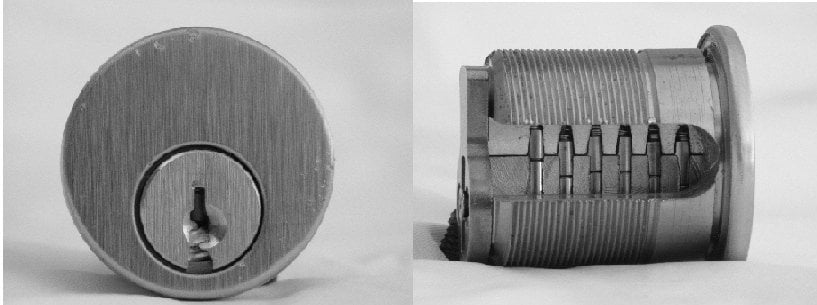
The most popular locks are the mechanical ‘Pin and Tumbler Locks’, which most people use to lock their doors and closets. Opening locks of this type without the right key requires a little practice and the right tools. While this is a helpful technique, we implore you to avoid using this skill unethically. Getting that warning out of the way, let’s learn how these locks actually work so that we have a better understanding of how to break into them.
Recommended Video for you:
How Does A Pin And Tumbler Lock Work?
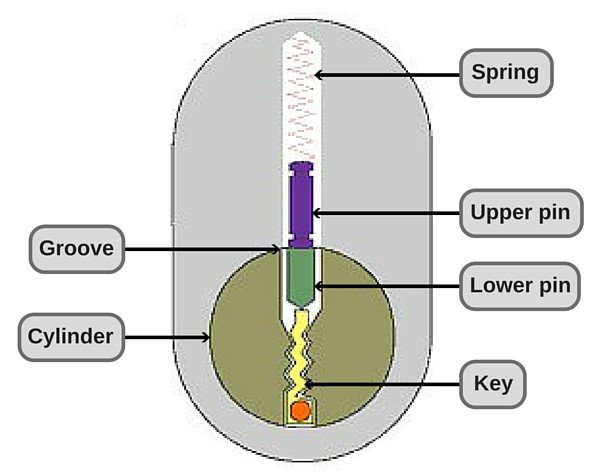
The main components in the pin-and-tumbler design are a series of small ‘pins’ of varying lengths. The pins are divided up into pairs that touch each other, and each pair is contained in a hollow cylindrical shaft. The part of the pin that is above is attached to a spring, which keeps it in position. Starting from the top, there is a spring, below which is a blue part of the pin connected to a red pin.When the key isn’t inserted, the pins are pushed down towards the boundary of the tumbler. All of the divisions of the pin are of varying lengths, which gives the lock a level of encryption security. If a person knew the length of each of these pins and their order, a key could easily be designed to crack the lock.

The image above describes how the pins finally ‘set’ into the required position so that the tumbler can rotate.
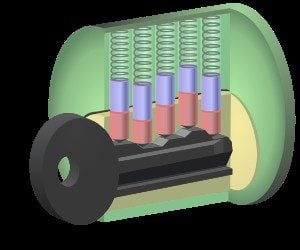
If an incorrect key is inserted (as in Figure 1), the grooves of the key wouldn’t be the correct height. Therefore, the pins would settle into the wrong positions, making it impossible for the tumbler to rotate.
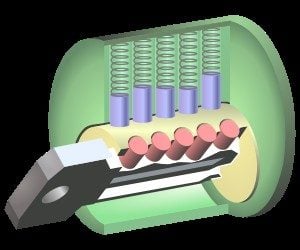
When the correct key is inserted (as in Figure 2), the grooves of the key perfectly adjust the height of the pins. The groove that separates the red from the blue parts of the pin correctly lines up with the edge of the tumbler. If the key is turned in this situation, the whole tumbler rotates and the lock opens.
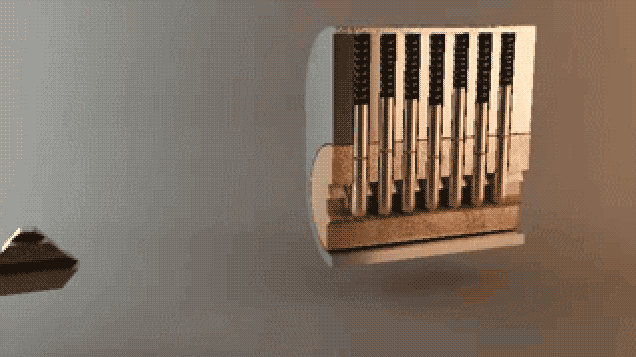
How To Pick A Pin-and-Tumbler Lock?
Step 1:
This method should work on most Pin-and-Tumbler Locks that people normally use. To start with, you need the right tools for the job. You will require one wrench to apply tension to the lock cylinder and one long pick to actually get the pins of the lock to move. Available in most hardware stores, you can fashion these out of wires lying around your house too. Many people can even do this with a hair clip or something similar, but that’s expert level stuff. Let’s just stick with the easiest one for now, shall we?
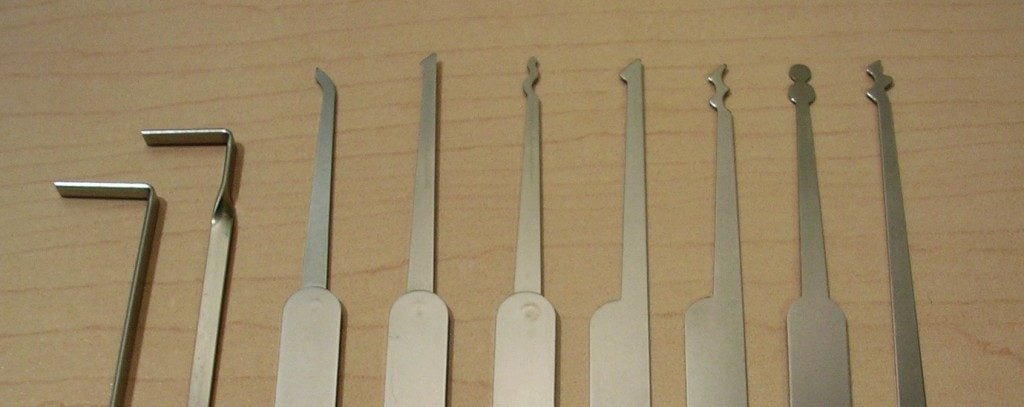
Step 2:
Determine the direction in which the lock is supposed to rotate. You can do this by using the tension wrench. Insert its smaller end into the edge of the slit, exactly where you would insert the key. Turn the wrench to get a feel for which direction is easier to turn. That’s the direction in which the lock is supposed to rotate. Turn the lock’s cylinder in the correct direction and hold it that way.
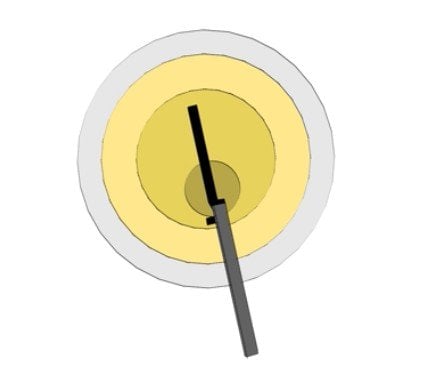
Step 3:
Insert the pick into the upper part of the keyhole and feel the pins. You should be able to feel the force by which the pins are being pushed back down by the spring when you try to push them up. Identify which one is the most difficult to push up. If there is no observable difference in their stiffness, turn the wrench to give the pins even less room to move. You should then be able to identify the hardest pin.
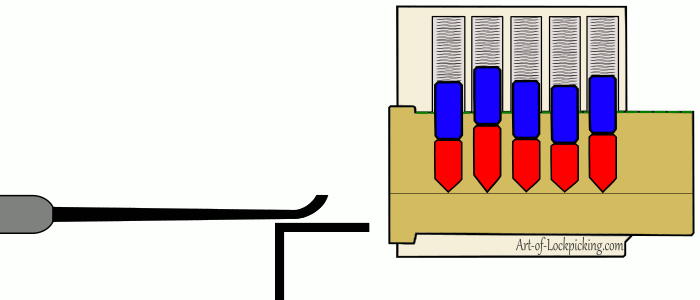
Step 4:
Keep pushing the identified pin up until you hear a faint ‘click’. This means that that it has set with the groove in the cylinder. The upper part of the pin is completely out of the cylinder and is now compressing the spring. The most important part here is keep the torque wrench in place with the two halves of the pin separate; if you loosen your grip, the upper pin will fall back down under the spring’s force.
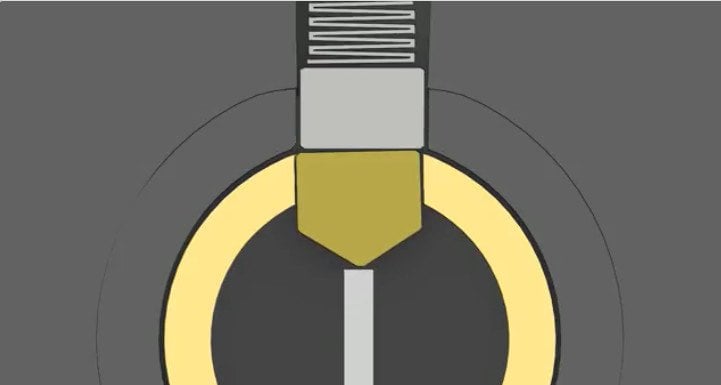
Step 5:
Work your way around the remaining pins using the same strategy. You might need to adjust the torque on your wrench after each pin ‘sets’ into the groove of the lock’s cylinder. Once all the pins are set, you should be able to turn the cylinder and open the lock!
Although, pin-and-tumbler locks aren’t the only locks out there, they have been in use for ages and it seems like they’re going to stay that way. The security level of such a lock depends on various factors, such as the number of pins, the width of the slit and the accuracy of the design. Sometimes, keys are indented on the plain surface to make it even more difficult for instruments to mimic the behavior of actual keys. However, for most locks, once you master this technique, lost keys won’t be a problem for you anymore.












